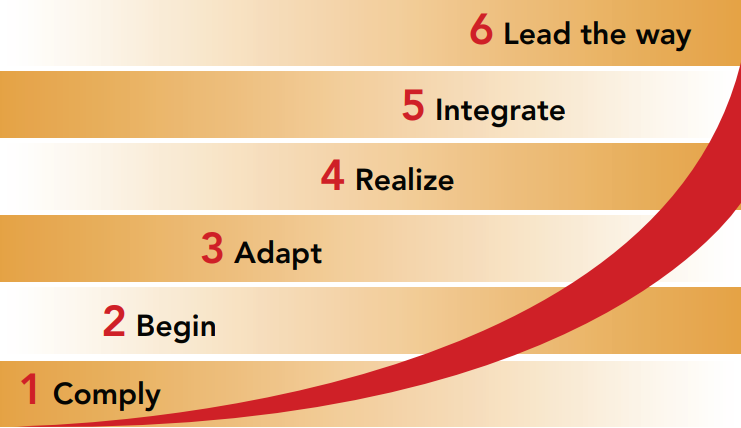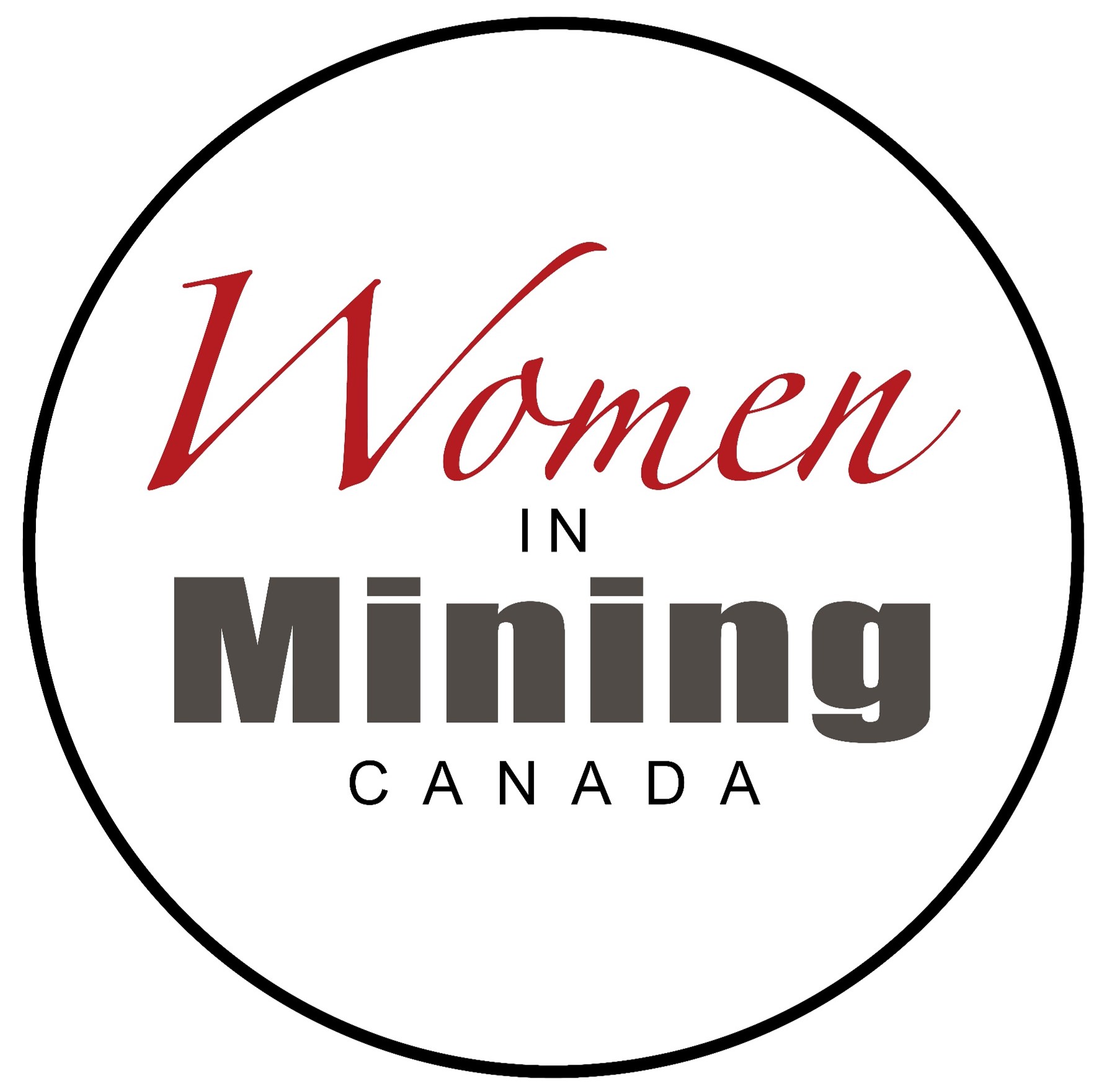4. Gradual Progress Towards Gender Inclusion
Gradual Progress Toward Gender Inclusion
The progressive shifting of a work culture to one that is more inclusive of women is often described as a journey, depicted as steps in a continuum toward more sustainable and institutionalized inclusion (MacBride-King & McLean, 2006). Each organization will be at a different place in its journey. The characteristics and recommended next steps outlined below will not fit each and every situation perfectly. They are provided to help you pinpoint your site’s, your company’s or the industry’s current status, and generate ideas for next steps.
Inclusion Growth Curve8

8 Adapted from the continuum proposed by MacBride-King & McLean (2006).
Stage on the continuum: Compliers
At Present:
- These companies (or industries) tend to do only what is required to comply with employment equity/human rights legislation.
To move forward to being Beginners:
- Shift the discussion to a focus on the business case and awareness of the benefits.
- Site: to your operations (turnover, productivity, health and safety).
- Company: to your bottom line and shareholders (operational results as above, Board governance and corporate financial results).
- Industry: to our ability to compete for limited resources (talent and capital).
- Develop your compelling case for change; start to collect baseline and readiness assessments.
- Start to identify and nurture potential Champions.
Stage on the continuum: Beginners
At Present:
- Willing to do more than the minimum.
- Tend to focus on “fixing” their numbers and representation rates.
- Often have programs focused on resolving gender ‘problems’ such as conflicts, harassment or bullying.
To move forward to being Adapters:
- At a minimum, ensure you have a solid anti-harassment policy and set of practices.
- Site and company: Don’t just “talk the talk” by having a policy; make it “come alive” through constructive processes for reporting and resolving issues.
- Expand the focus beyond the representation rates and “problems”; create a vision of the benefits of an inclusive workplace that will carry you to the next phase in the continuum.
- Identify some opportunities for early wins and demonstrated success; start small. (See Signs and Symbols of a Workplace Culture above.)
- Site and company: Common starting points at this stage include a focus on respect in the workplace (training, coaching and policies); inclusive job titles and work terminology; and recruitment materials that reflect women in a wide range of roles.
- Industry: Call out sexist practices seen at industry events or in companies’ publicity campaigns to create new norms; distribute a list of inclusive job titles and work terminology; develop or revise materials to show women in a wide range of roles.
Stage on the continuum: Adapters
At Present:
- Have moved beyond a focus on employment equity and representation numbers.
- Often experiment with several programs/initiatives/policies.
- Realize that subtle barriers might exist; lack a coordinated approach.
- Diversity is seen primarily as an HR responsibility.
To move forward to being Realizers:
- Focus on a small number of strategic initiatives that will deliver strong, evidence-based value to the business.
- Develop a coherent strategy that aligns the various initiatives – link attraction to retention, career development to training, bias-awareness to inclusive talent management.
- Define new behaviours and approaches that reflect an inclusive workplace for women.
- Focus on developing strong Gender Champions, supporting them with coaching, training and resources as needed.
- Site: involve a few key opinion leaders and supervisors.
- Company: engage a few well-regarded senior leaders, particularly those in line management (operations) functions – as long as they are truly committed.
- Industry: create a network of senior leaders from across the industry, who are willing to be visible and active champions.
Stage on the continuum: Realizers
At Present:
- Understand the importance of diversity for business success.
- Vision/mission/values highlight the importance of diversity.
- Show early movement toward an integrated approach to gender diversity and inclusion; a few strategic initiatives are successfully under way.
- Leaders throughout the organization champion diversity, and the organization invests in it.
To move forward to being Integrators:
- Ensure that there are meaningful metrics for monitoring and assessing impact and ROI – that are meaningful at the levels of individual work sites, companies, and the industry overall.
- Continue to integrate gender inclusion into the business by aligning accountabilities with management structures and reporting; create “targets with teeth”; require suppliers to demonstrate support for gender inclusion.
- Explore innovative systemic approaches, such as support for work-life integration (flexible schedules, job sharing) and gender-inclusive definitions of management competencies.
- Site: Develop a habit of questioning “how things have always been done” and then dare to be different.
- Company: Work with some “early adopter” prototype sites to move from separate initiatives to a workplace culture that is fully inclusive of women; take a systemic view of the full business to uncover and address subtle gender barriers.
- Industry: Create opportunities for companies and industry stakeholders to collaborate on innovative pilots.
Stage on the continuum: Integrators
At Present:
- Taking an integrated approach to diversity.
- Gender diversity and inclusion is embedded in the culture
- Internal accountability. frameworks are established
- Supplier and partner diversity initiatives are established and aligned.
To move forward to being Community Leaders:
- Focus on sustainability by using storytelling and consistent communications to further integrate inclusion into the culture.
- Update measurements and targets to reflect progress to date and any evolving needs. Prepare tangible measurements that you will be willing to share publicly.
- Collect success stories and examples of positive impact to support being seen as a role model; engage the workforce in uncovering examples; and equip champions with leadership skills of storytelling.
- Build partnerships that will extend your influence and support wider gender inclusion efforts.
- Site: Partner with community groups, local training schools, and business associations in the region.
- Company: Create meaningful relationships with professional women’s associations and educational programs in your regions of operations and/or nationally; participate in industry projects and initiatives for gender inclusion.
- Industry: Partner with other associations or groups focused on gender inclusion in scientific, technical or engineering fields; create and leverage relationships with funding agencies and media groups.
Stage on the continuum: Community Leaders
At Present:
- Engaged in community-wide efforts to educate/inform others about diversity.
- Active proponents of community-wide efforts.
- Role models of diversity and inclusion.
To maintain momentum:
- Become a strong visible Champion within the mining industry and beyond.
- Site: Communicate your successes and be willing to share your insights and practices with others – inside your company, with your suppliers and others in your community.
- Company: Speak at conferences and participate in high-visibility initiatives focused on diversity and gender inclusion.
- Industry: Host learning events; represent the mining sector in regional or national events and initiatives with a focus on inclusion; and seek to create a reputation (particularly within the resource sector) for inclusive practices welcoming of talented women.
